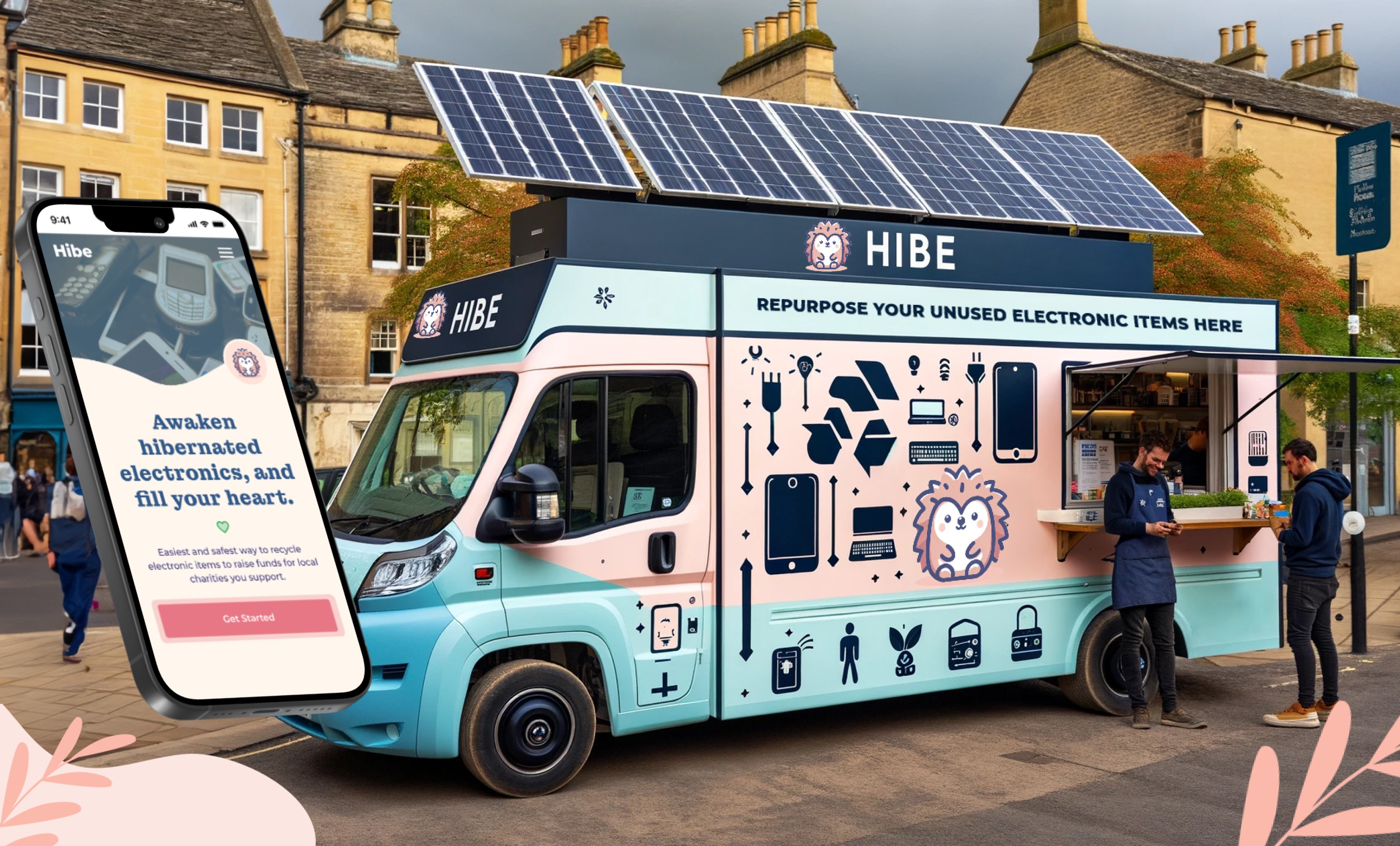
HIBE - From Sleep Mode to Green Mode
Empowering Communities, Extending Device Lifecycles

6
Months
Finalist of Ford Smart Mobility Challenge 2023, awarded £5,000 in funding
Summary:
Hibe is a service designed to simplify the disposal of small-to-medium-sized electronics while fostering a circular economy. By partnering with local charities and recycling companies, we enable users to either recycle or donate their unused devices, supporting sustainability and community development. The service is powered by multiple collection methods, transparency in data handling, and user engagement through charitable feedback loops.
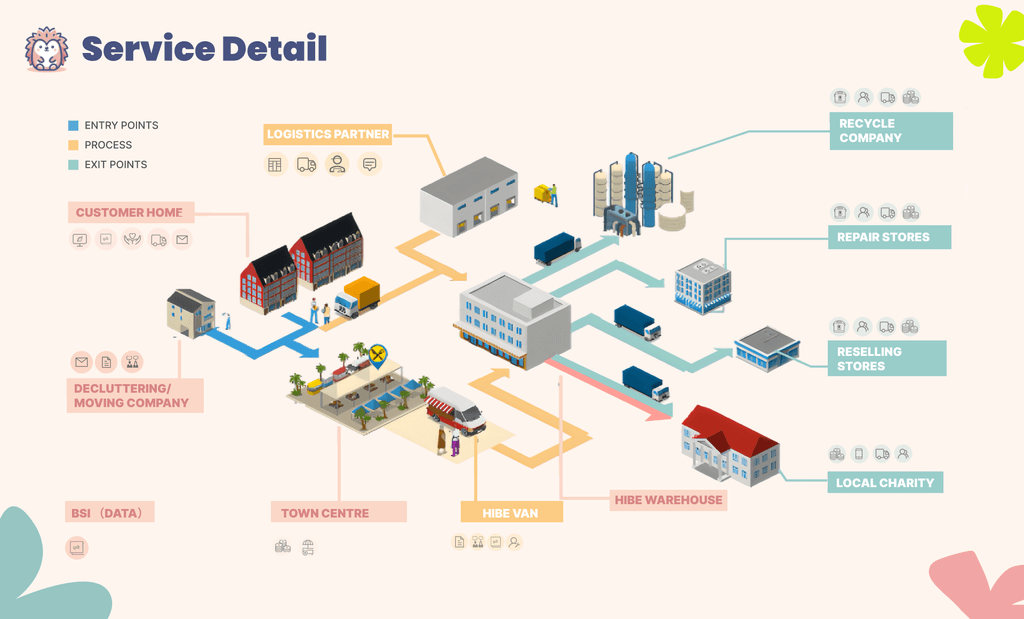
A visual representation of the touchpoints within the Hibe service, illustrating how devices enter and exit the circular economy through various channels like repair stores, recycling partners, and charitable donations.
Process
Defining the Problem
Households in the UK hold an average of 20 unused electronics, often left in "hibernation" due to emotional attachment, lack of convenient disposal options, or data privacy concerns. These devices contribute significantly to the e-waste crisis, as most end up in landfills.
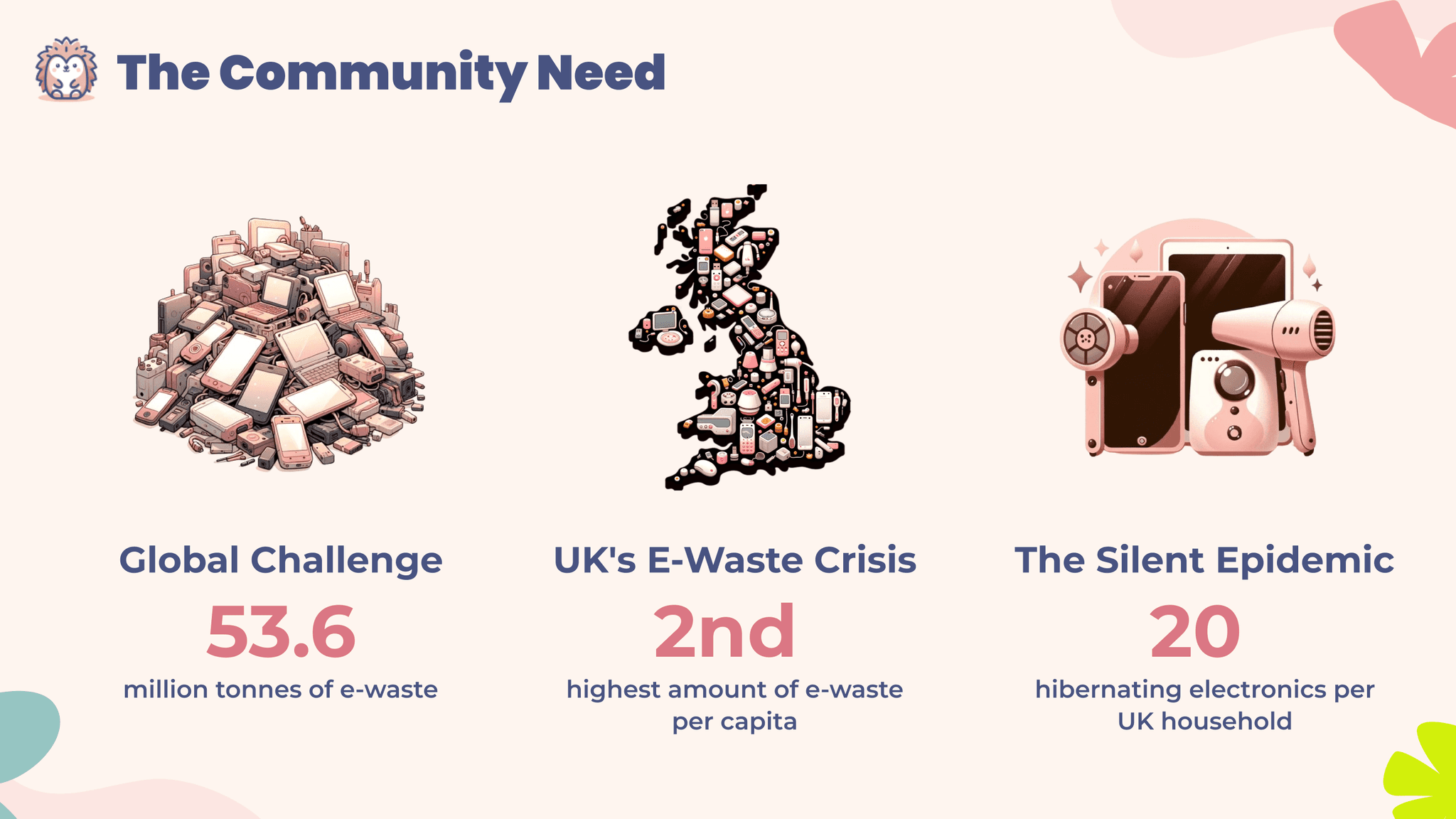
Service Concept:
Hibe simplifies the process of responsible disposal by offering flexible collection methods, on-site or online data migration, and the ability to choose a charity to donate to. Our goal was to make it easy for users to declutter their homes while feeling emotionally satisfied by knowing their devices contribute to a good cause.
Research
Uncovering User Needs and Market Gaps:
Our research phase was critical in understanding both the user motivations and the systemic barriers surrounding the disposal of hibernating electronics. We employed a mixed-method approach that combined qualitative user research with market analysis to develop a service that not only addresses environmental concerns but also resonates with users emotionally and practically.
Process:
We began with secondary research to grasp the global and UK-specific e-waste problem, particularly focusing on small-to-medium-sized electronics. This helped us frame the scope of our project and identify key challenges, such as the emotional attachment people have to their devices and the logistical hurdles in recycling.
Next, we engaged in primary research, conducting direct interactions with users and stakeholders, such as second-hand retailers, refurbishers, and recyclers. We used a combination of interviews, surveys, and observational research to dig deeper into user behaviors and the market ecosystem.
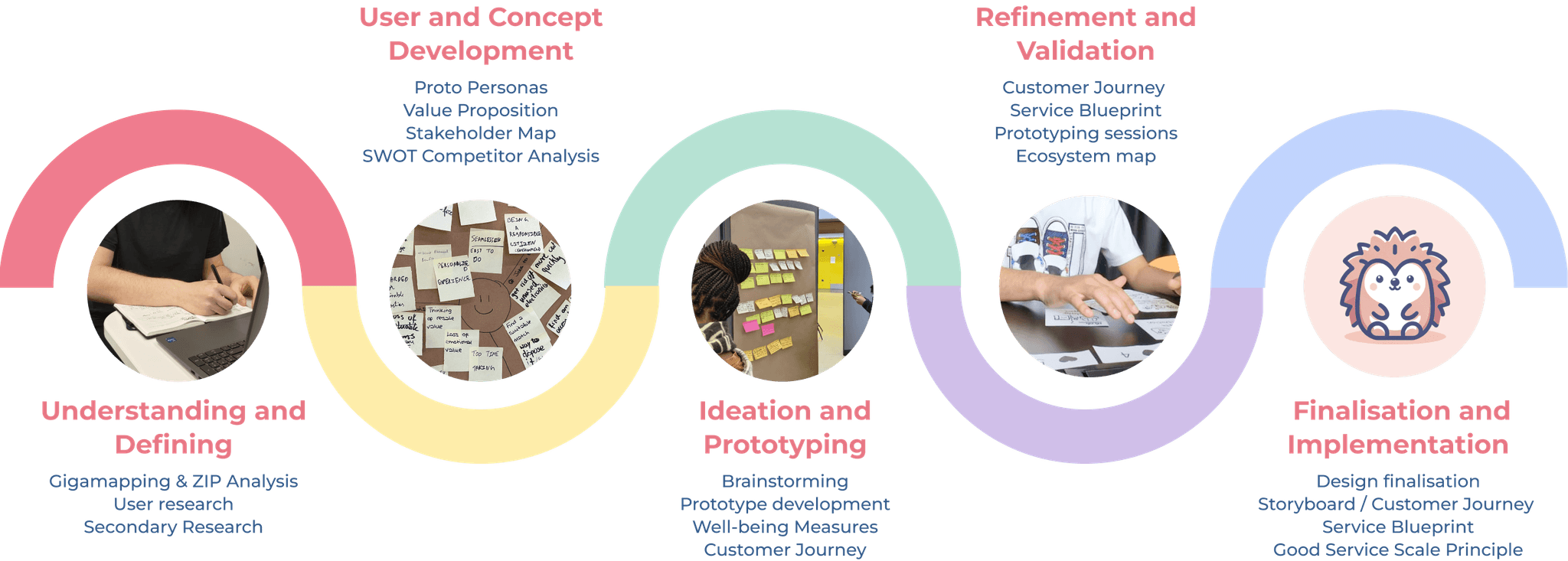
Methods & Tools:
User Personas & Journey Mapping:
We used journey mapping to chart the path users currently take when deciding what to do with their unused devices. This method helped us pinpoint emotional, psychological, and practical pain points that Hibe could address.
Stakeholder Interviews:
We conducted semi-structured interviews with key stakeholders, including second-hand store owners and repair shop employees, to understand the backend of the recycling and refurbishment processes. Questions focused on user behaviors, device management challenges, and opportunities for partnerships.
Surveys & Questionnaires:
These were used to reach a wider user base, gathering quantitative data on why people hold onto unused electronics, what would motivate them to let go, and their current understanding of recycling options.
Card Sorting for Value Proposition:
To refine our service’s value proposition, we used card sorting techniques, allowing users to prioritize features they valued most—such as data privacy, ease of use, and charitable donation options.
Research
Key Findings
Emotional Attachment:
Many users hold onto their devices not because they intend to use them but because of sentimental reasons or fear of regret. This insight shaped Hibe’s approach by emphasizing charitable donations, allowing users to emotionally connect with where their device would end up.
Data Privacy Concerns:
One of the biggest barriers to responsible disposal was data privacy. Users were hesitant to donate or recycle devices without being sure that their personal data was wiped securely. This led us to integrate on-site and online data migration services as a key feature of Hibe.
Motivation Through Charity:
Contrary to our initial assumptions, monetary rewards (like selling devices) were not the primary motivator. Instead, users preferred to contribute to a social cause. This shaped the heart of Hibe’s service, linking device donation to charitable impact, with clear feedback loops to show users the value of their contribution.
Convenience is Key:
The flexibility of the collection process was crucial. Users wanted multiple options, from at-home collections to drop-off points and mobile van events. This insight guided the design of Hibe’s flexible service options to lower the barrier for participation.
Market Gaps:
Through interviews with second-hand stores and refurbishers, we discovered that many unsold or unrepairable devices end up in landfills, reinforcing the need for Hibe’s recycling loop. We also learned that existing services lacked transparency and failed to engage users emotionally, leaving a gap that Hibe could fill.
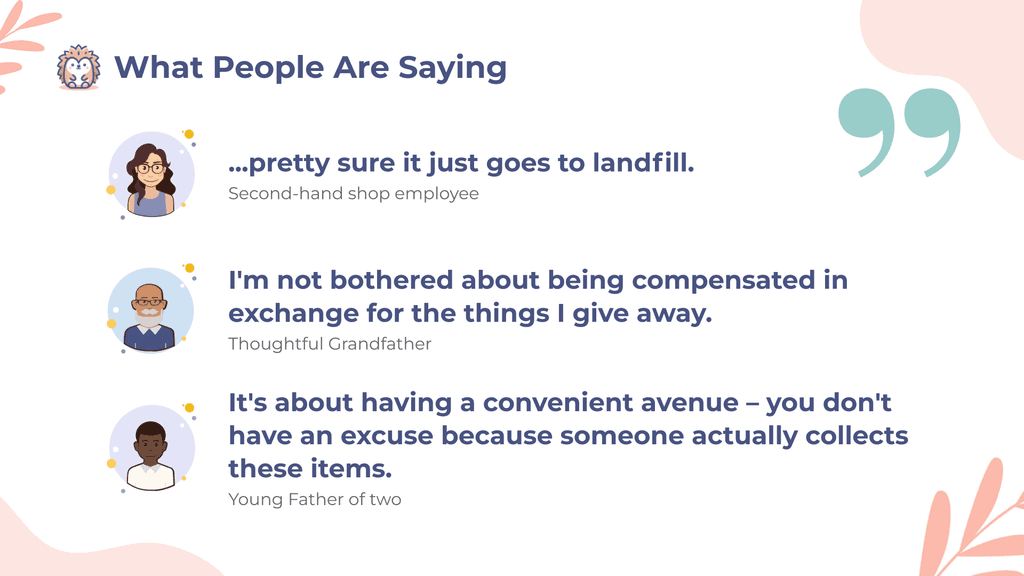
Iterations
Refining Hibe
Throughout the project, we made several key iterations, each driven by research insights and user feedback. These adjustments helped us fine-tune Hibe into a service that addresses both the emotional and practical needs of users, while ensuring environmental impact.
Emotional Engagement:
Initially, we assumed users would be motivated by monetary rewards. However, research showed that people are more driven by the emotional satisfaction of donating to a cause. We shifted our focus to charitable feedback—allowing users to donate devices and receive updates on how their contribution made an impact.
Recycling Integration:
We found that unsold devices in second-hand stores often ended up in landfills. This prompted us to emphasize recycling in Hibe’s process, ensuring unusable devices were properly recycled through partnerships with companies like YesWaste.
Convenience & Flexibility:
Early feedback indicated that convenience was crucial. In response, we expanded collection options, offering van events, at-home collections, and drop-off points at parcel shops to make the service as accessible as possible.
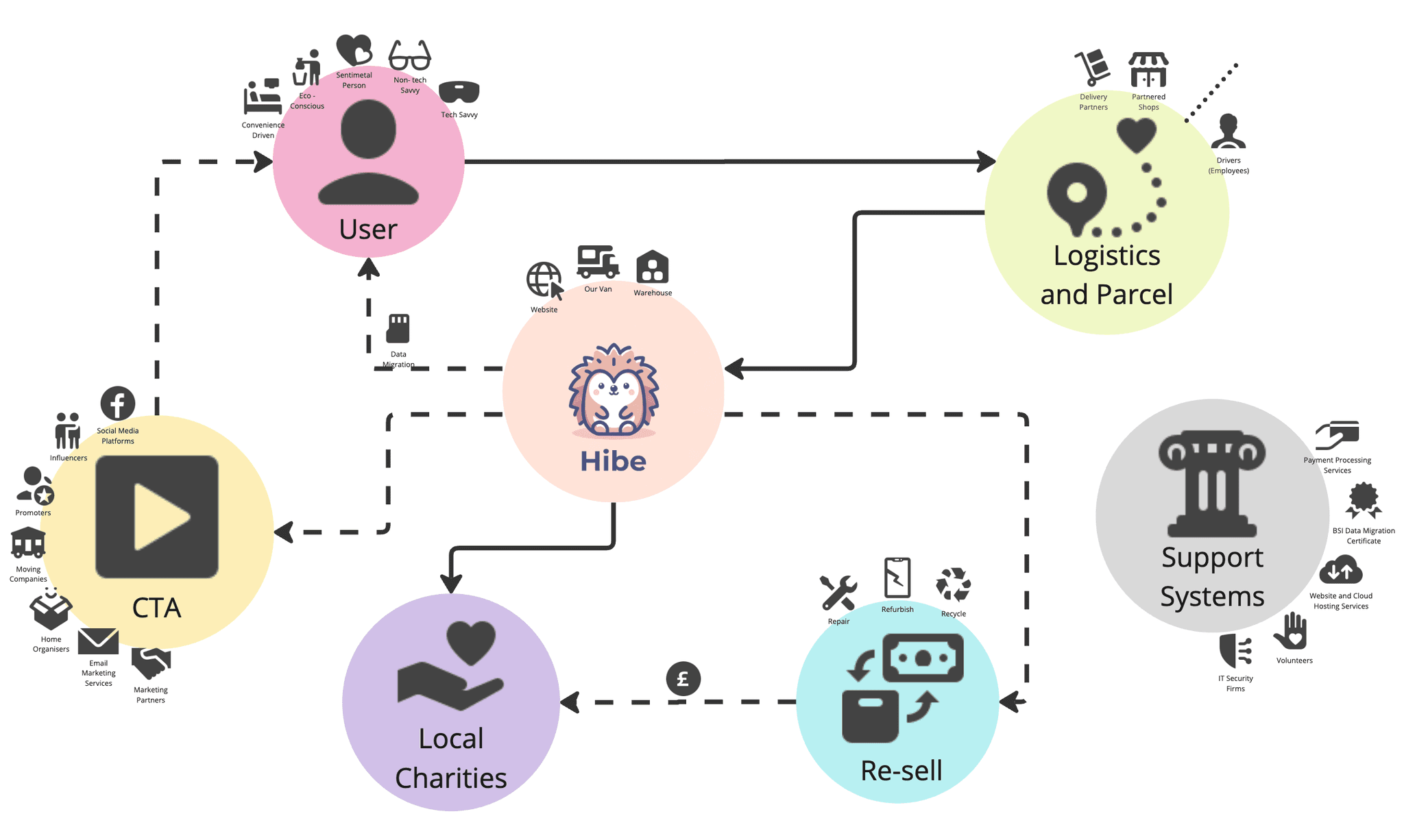
The key changes were:
Shift from monetary rewards to charitable engagement.
Enhanced recycling efforts to close the circular economy loop.
Broadened collection methods for maximum user flexibility.
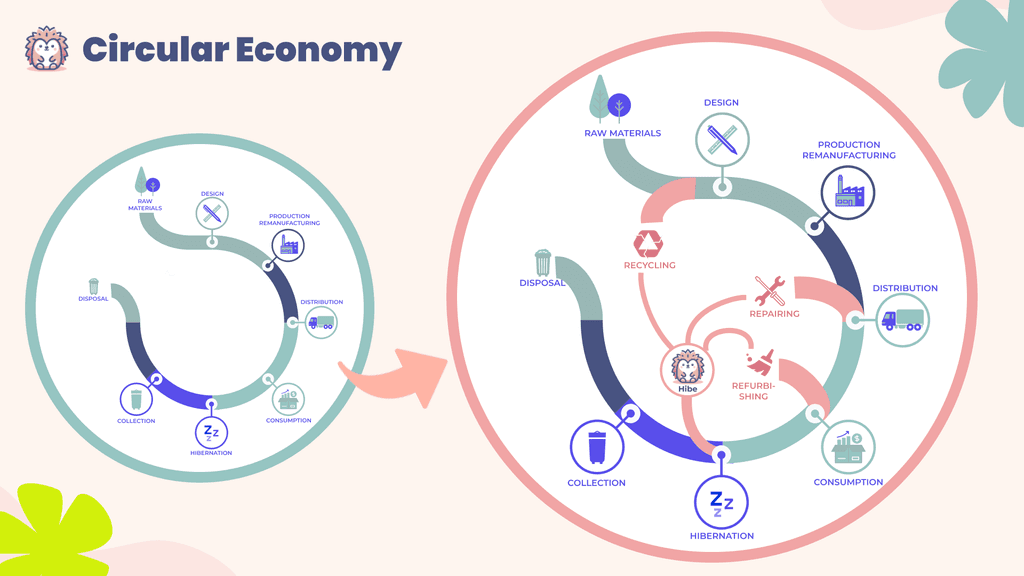
Design Solution
Hibe Service Solution:
Hibe creates a circular economy by linking device disposal with social good. Users can donate devices to a charity of their choice or recycle them through our service. Data is securely wiped, and refurbished devices are resold or donated to local organizations.
Platform & UX Design:
Users can schedule collections via the Hibe website.
Onsite and online data migration options ensure data security.
Visual updates about how their donated devices are being used (e.g., refurbished for charity use) drive emotional engagement.
Convenience & Transparency:
Various touchpoints include van collection events, drop-off points, and home pick-ups.
Users receive a certificate for data destruction and follow-up reports on how their device contributed to social good.
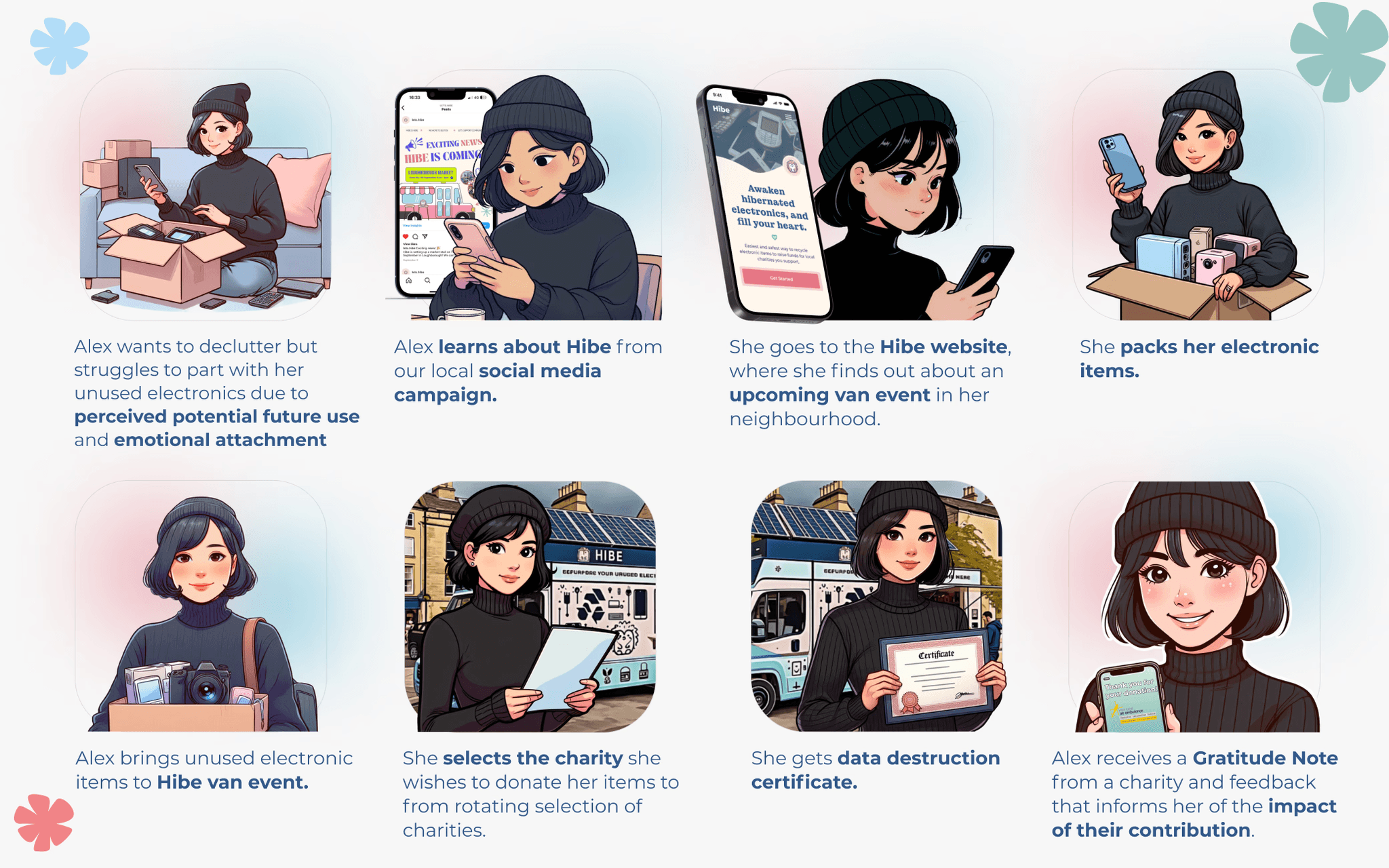
Design Solution
Outcomes & Impact
User Engagement: 60% of users were motivated to use the service for the environmental and social benefits rather than financial incentives.
Sustainability: Hibe directly contributes to reducing e-waste, extending device lifespans, and supporting local communities.
Prototype Success: The market stall prototype gave us vital feedback that shaped our service blueprint, improving both user experience and service logistics.
Market Viability: Through hands-on testing, we validated the need for more accessible recycling solutions, with positive feedback from both users and potential partners.
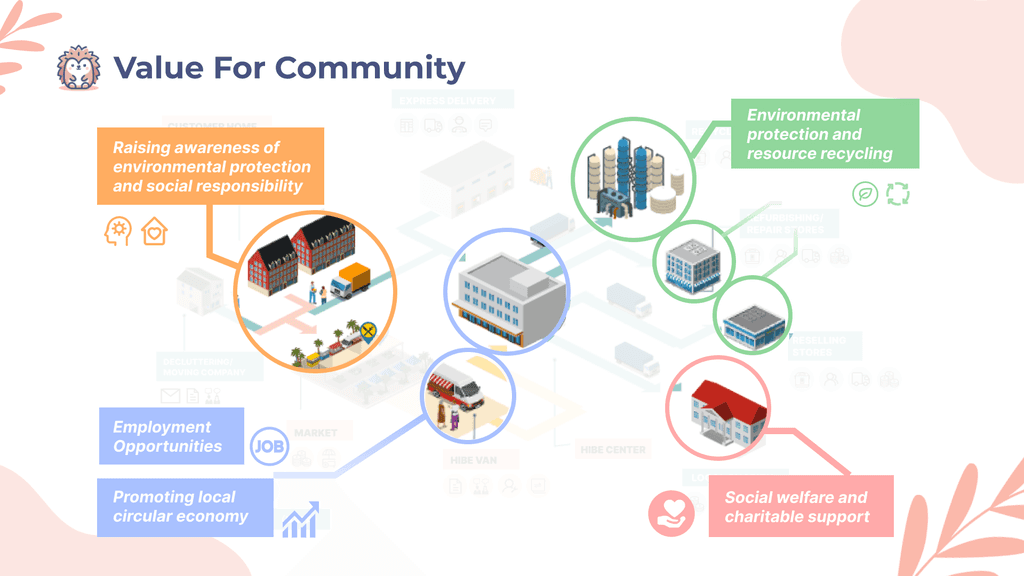
Reflection & Future Steps
Lessons Learned:
As a service designer, this project highlighted the importance of iterative prototyping and user engagement in shaping a service. I learned how to balance user motivations with the operational challenges of creating a circular economy service. The emotional satisfaction tied to donating unused items proved to be a stronger driver than anticipated, and integrating this insight into the service design was key to our success.
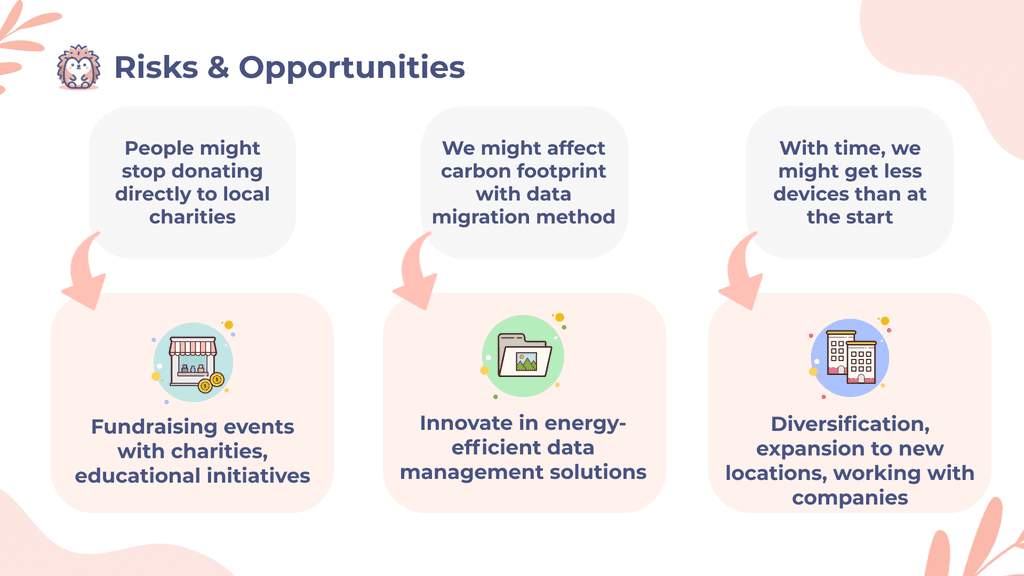
Next Steps:
Expand Partnerships: Grow partnerships with local recyclers, repair shops, and charities to scale Hibe across more regions.
Platform Development: Continue developing the Hibe website and mobile app for a seamless user experience.
Geographic Expansion: Explore expanding Hibe into new markets that face similar e-waste challenges.
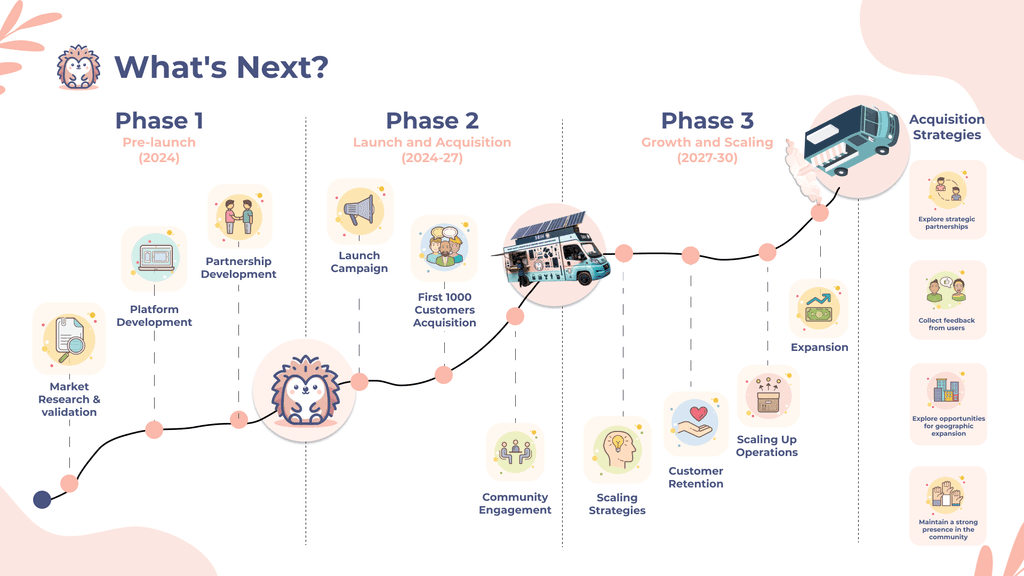
A visual roadmap outlining the future plans for Hibe.
Conclusion:
Hibe is more than just a recycling service—it is a socially driven platform that empowers users to make a positive impact on the environment and their community. By aligning convenience with emotional motivation, we have created a sustainable solution for the growing problem of electronic waste.
